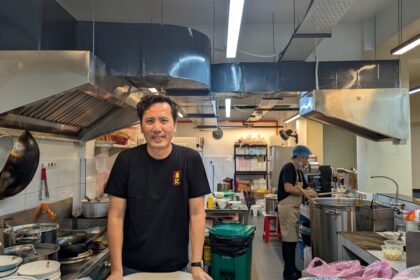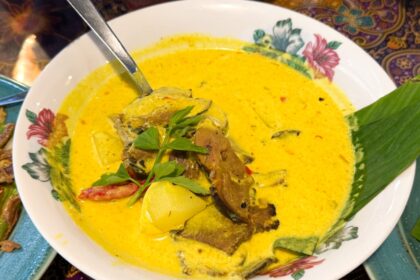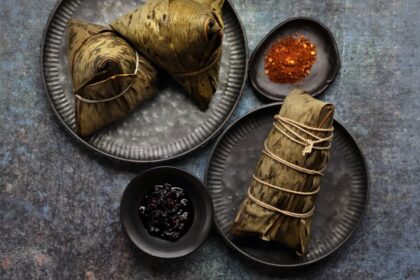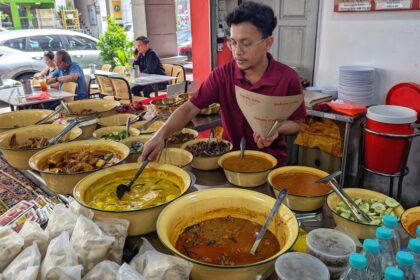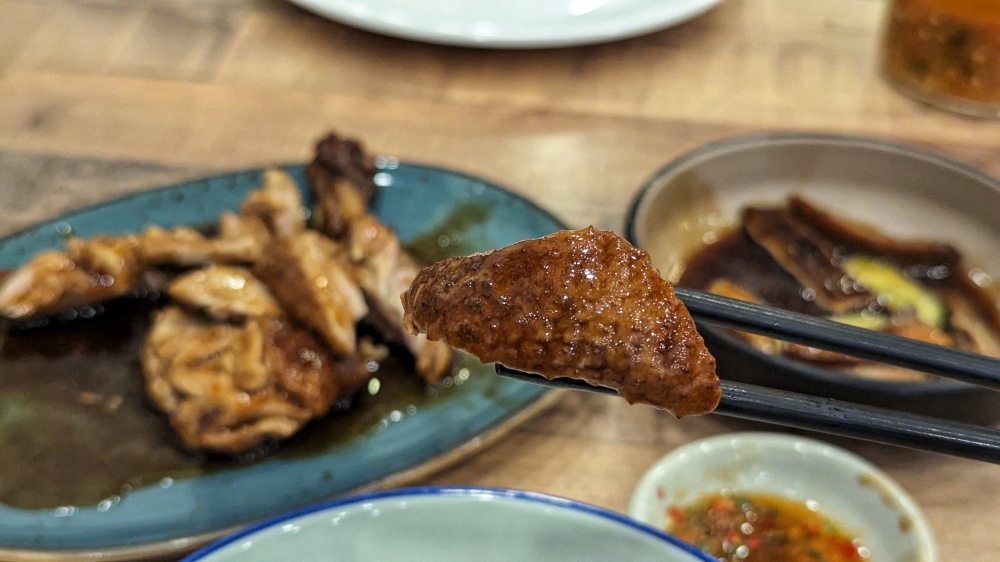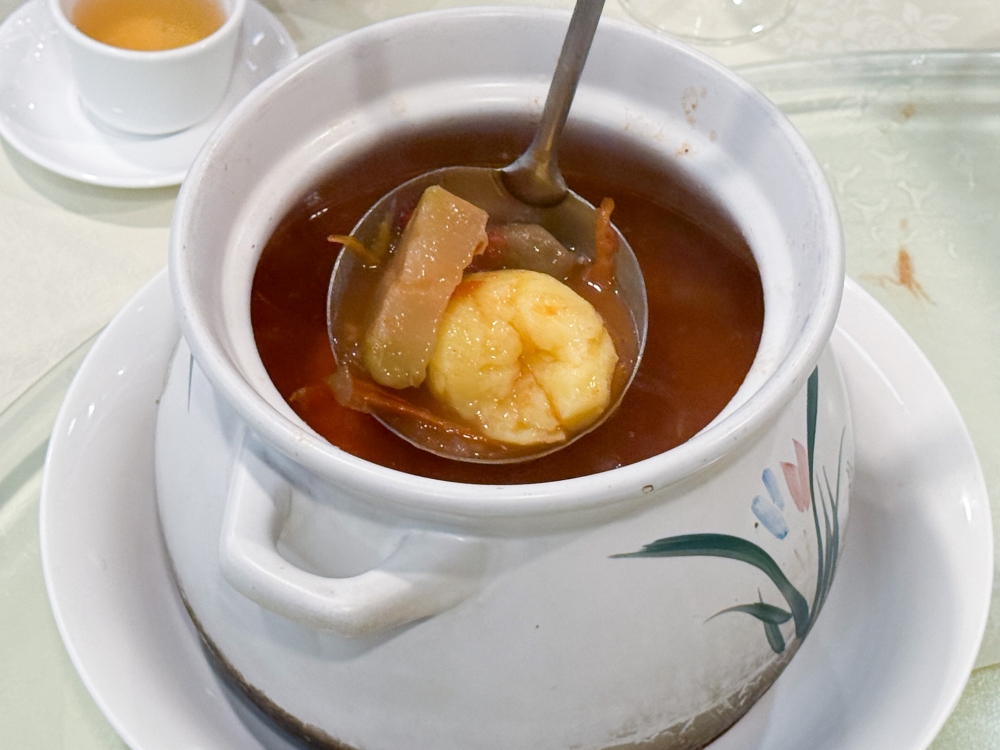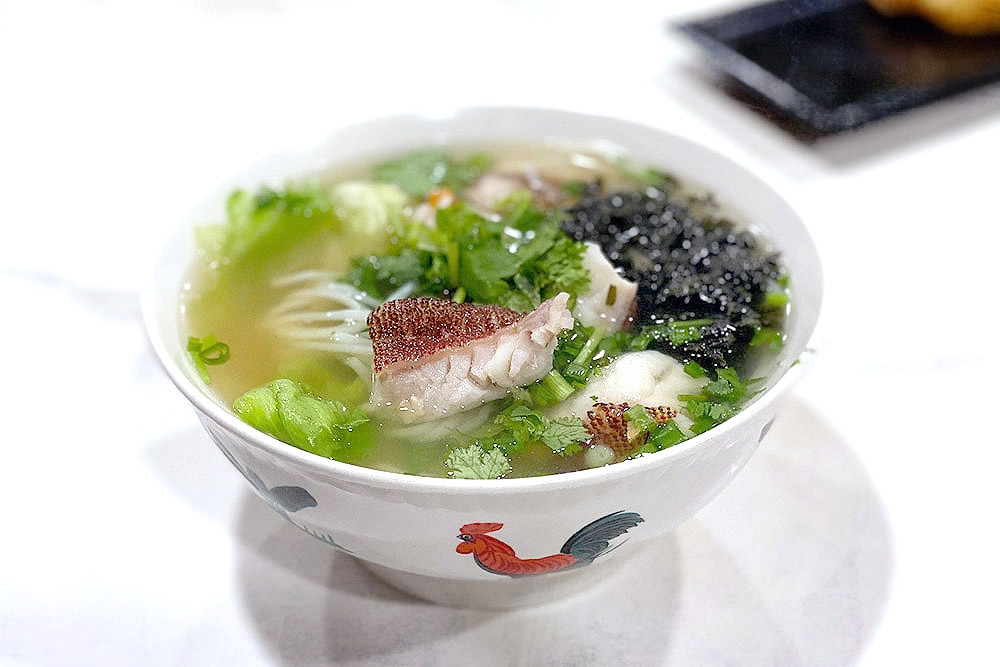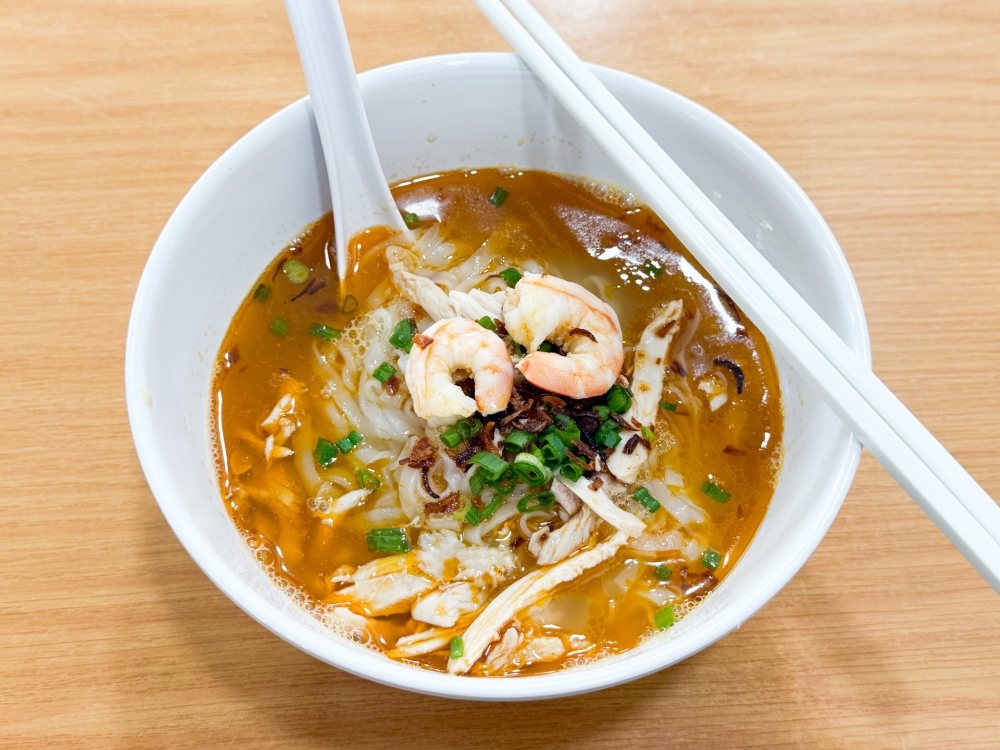
KUALA LUMPUR, May 24 – One of my favourite Thai dishes is the one-dish wonder goong ob woon sen or claypot glass noodles with prawns.
Heady with aromatics such as ginger, garlic, peppercorns and cilantro roots, these translucent cellophane noodles – made of mung bean starch – soak up all the umami-rich sauce during cooking. You taste the sweet prawns, the briny sauce, the funk of the nam pla (fish sauce).
I remember how we’d head to our usual Thai seafood restaurants in Bangkok, barely hours after landing and checking into our hotel, to enjoy this as our first meal of the trip.
It’s that good.
Best of all its status as a one-pot dish means there are fewer utensils to wash up once you’re done with dinner. More time to binge watch your latest Thai show obsession on GMMTV or ONE 31 afterwards, chai mai?
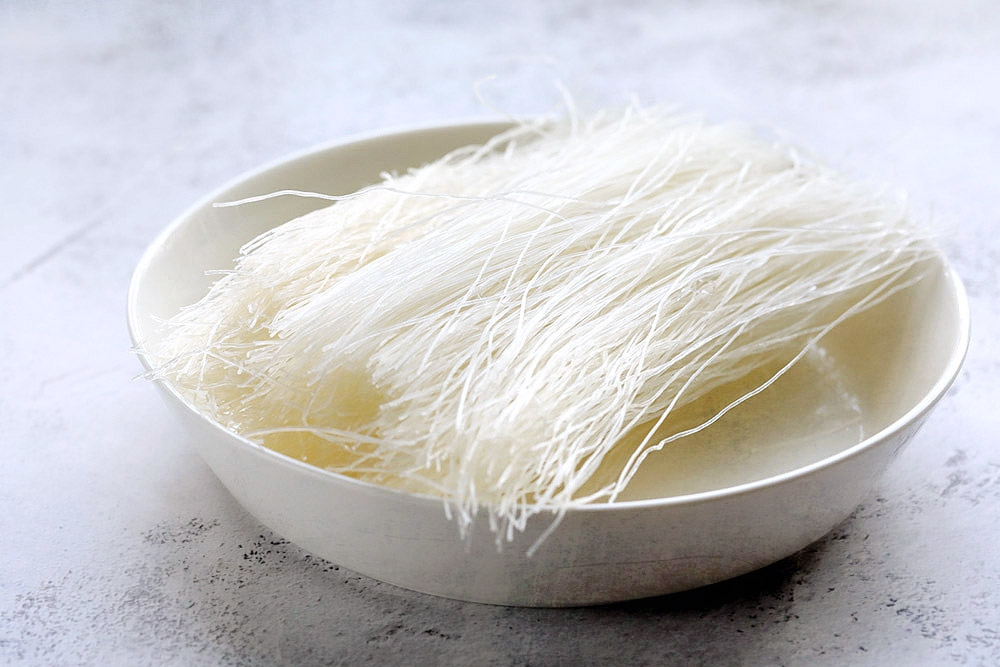
THAI CLAYPOT GLASS NOODLES WITH PRAWNS (GOONG OB WOON SEN)
Despite its name, I usually cook this in a normal pot rather than a claypot, preferably one large enough to feed 2-3 people. (When dining alone, I halve the recipe and use my trusty one-person claypot.)
Also fret not: though it involves quite a number of ingredients, the dish is fairly straightforward.
The approach is one of layering: First the pork lard at the bottom of the pot; its rendered fat will grease the base and prevent any food from sticking. Then the pounded aromatics will gently sauté and perfume the entire pot.
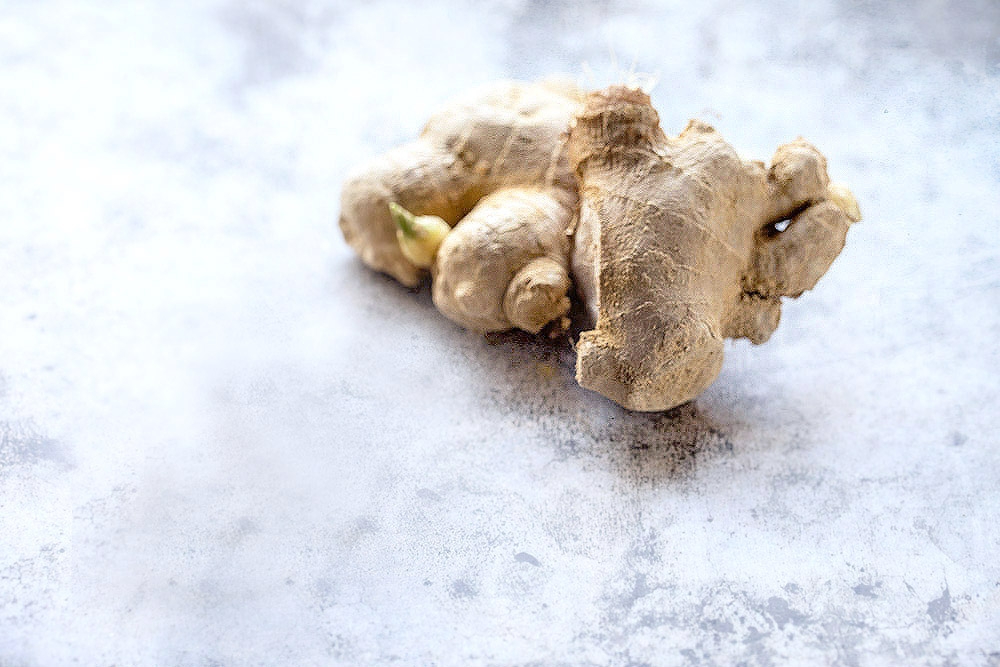
Next in goes the glass noodles, soaked in the sauces, and the prawns. Cover with the lid and cook till done. Simple and easy!
One thing to note is to read the instructions on your packet of glass noodles (or tong fun in Cantonese) before soaking them. Some brands may require only a few minutes; others require at least half an hour.
Finally I like to add some cabbage for extra fibre, though it’s not traditional nor compulsory. The cabbage holds up better to the cooking time than more delicate leafy greens.
Ingredients
120g dry glass noodles150ml chicken stock2 tablespoons oyster sauce1 tablespoon light soy sauce1 tablespoon dark soy sauce2 tablespoons Thai fish sauce (nam pla)2 teaspoons sugar1 tablespoon Shaoxing wine1 tablespoon sesame oil4-5 cloves of garlic½ teaspoon black peppercorns½ teaspoon white peppercorns2 medium pieces of ginger2 fresh cilantro roots50g pork lard (or pork belly), sliced into short stripsNeutral cooking oil (optional)12 medium prawns, deveined but heads and shells left intact¼ cabbage, chopped (optional)Chopped spring onion (for garnishing)
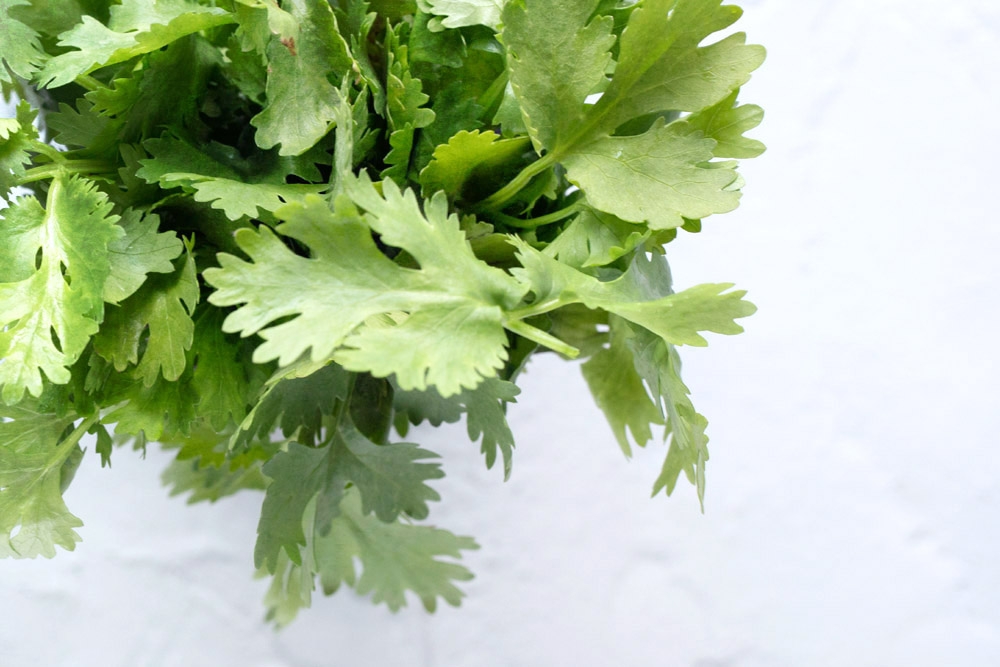
Method
Soak the dry glass noodles in a bowl of water; follow the packet instructions for how long to soak them, typically 10-30 minutes.
While the glass noodles are soaking, combine the chicken stock, oyster sauce, light soy sauce, dark soy sauce, fish sauce, sugar, Shaoxing wine and sesame oil in a mixing bowl. Set aside.
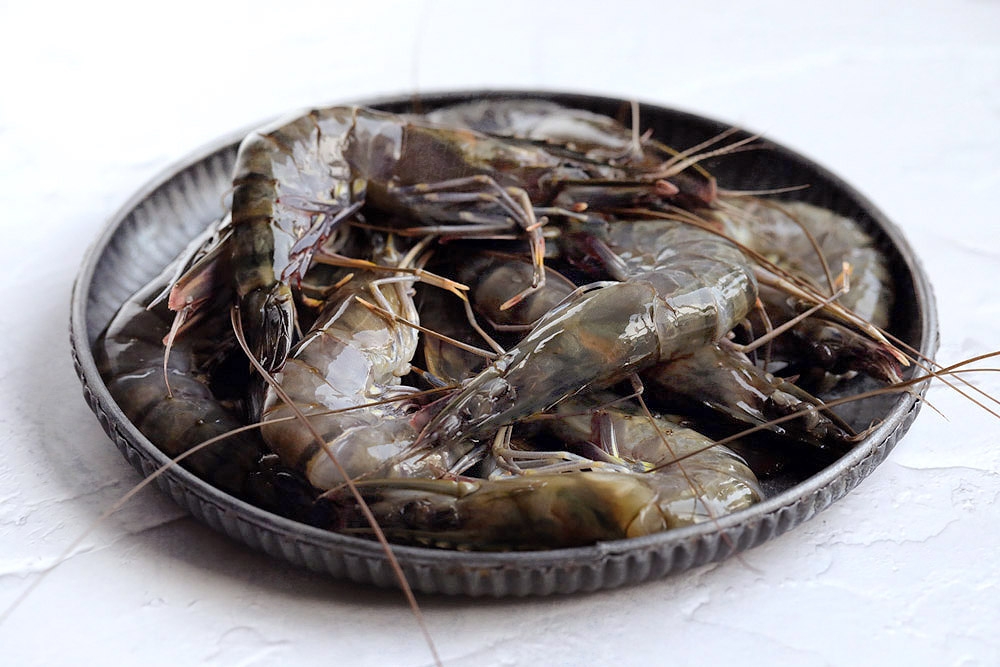
Using a pestle and mortar, pound the garlic, black and white peppercorns, ginger and cilantro roots until they form a coarse paste.
Once the glass noodles have softened, drain and add to the bowl of seasoning sauce. Stir well to mix.
Layer the bottom of the pot with the pieces of pork lard. Heat on the stovetop over low heat until the pork fat begins to render.
You may now add the aromatic paste on top of the pork lard. Increase the heat to medium. Drizzle a little neutral cooking oil over the paste, if there isn’t enough rendered pork lard to help the sautéing process.
Once the paste starts to release its aroma, add the glass noodles and any residual sauce. Top with the prawns (and cabbage, if using). Cover with the lid.
Cook over medium high heat for 6-10 minutes, until the glass noodles have absorbed most of the sauce.
Remove from the heat and garnish with chopped spring onion. Serve the dish in the pot it is cooked in. Enjoy whilst hot.
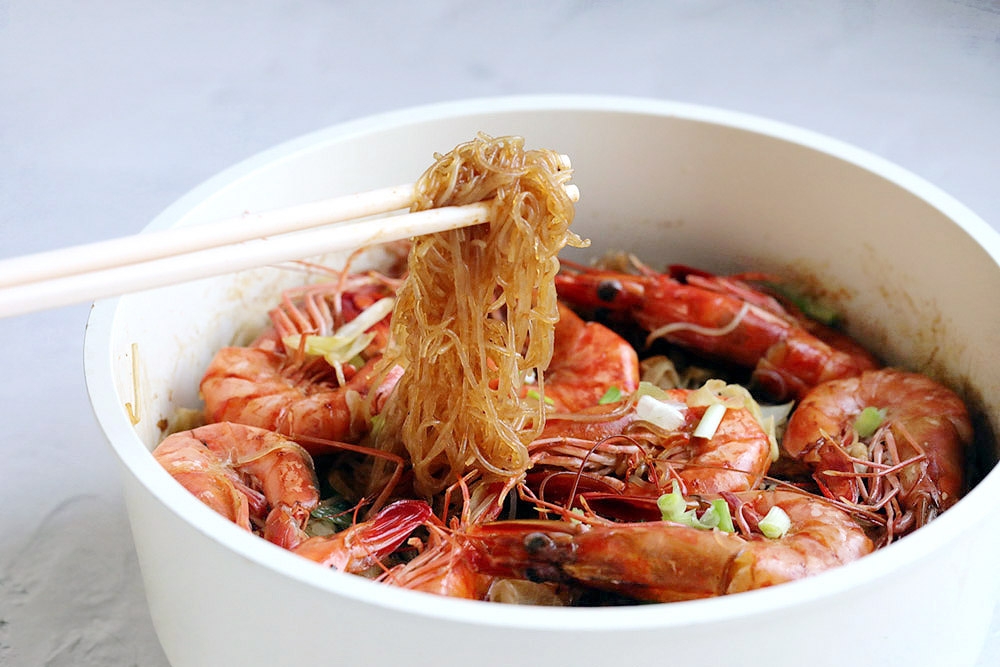
Source:  Savour this aromatic and umami-rich Thai claypot glass noodles with prawns
Savour this aromatic and umami-rich Thai claypot glass noodles with prawns


















